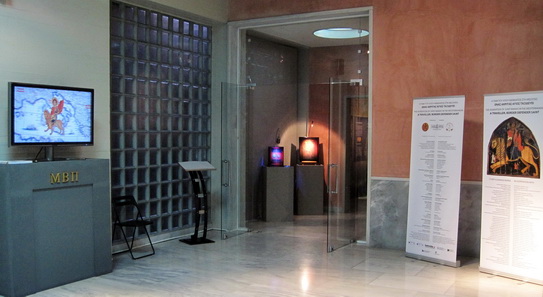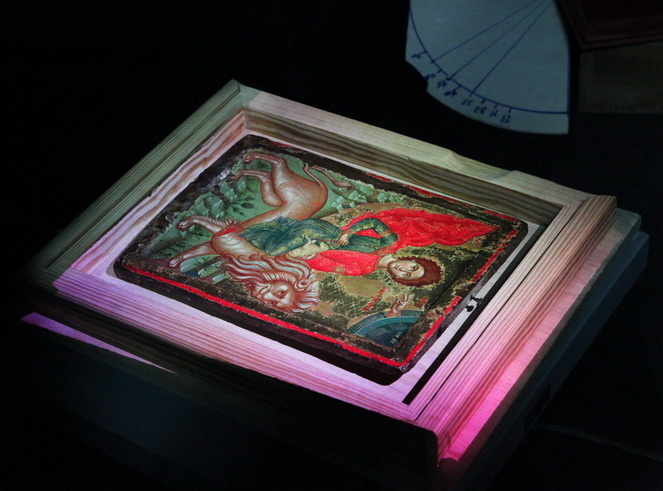OptoClones at the Museum of Byzantine Culture of Thessaloniki (Greece)
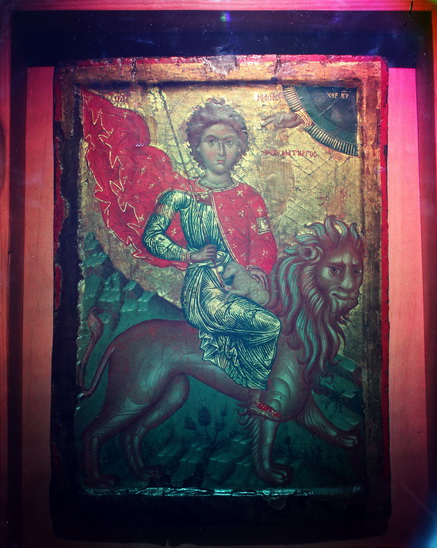
On Jan 19th, 2014 the temporary exhibition titled "The Veneration of St. Mamas in the Mediterranean: A Traveler Border-Defender Saint" organized by the Thessaloniki Museum of Byzantine Culture (MBC) as part of the 4th Biennale of Contemporary Art came to a successful end. Curators of this exhibition were the Museum director Dr. Agathoniki Tsilipakou and Dr. Nikolaos Bonovas, archaeologist, in cooperation with the archaeologist Dr. Christodoulos Hadjichristodoulou, who represented the Holy Bishopric and the Municipality of Morphou, Cyprus.
The veneration of the Christian martyr St. Mamas is not limited to Cyprus. It has been diffused from Caesaria to Constantinople and many locations in the Eastern Mediterranean and Greece as well as even further in Western Mediterranean with a network of dedicated honouring places and churches in Italy, France, Spain and Portugal. The center of this network is the Saint Mamas Cathedral in Langres, France where a part of his holy crane is conserved, brought there by the Crusaders after Constantinople's Fall in 1024.
The Hellenic Institute of Holography (HiH) eagerly responded to the invitation of the MBC archeaologist Dr. Panagiotis Kambanis and contributed in the success of the exhibition with the creation of Optical Clones (OptoClones) of selected original artifacts, which were displayed at the entrance of the exhibition hall. The official opening of the exhibition took place on Oct 23rd, 2013 by His All-Holiness the Ecumenical Patriarch Bartholomew in the presence of ...
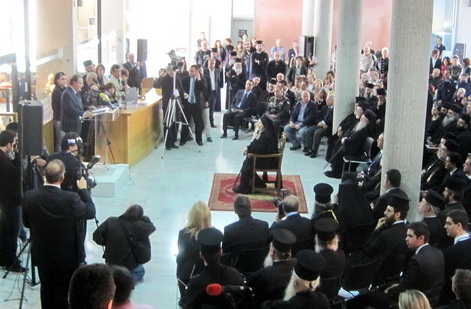
the Greek Ministers of Culture & Sports Mr. P. Panagiotopoulos and of Makedonia-Thrace Mr. Th. Karaoglou, of the Greek Chief of Defence General M. Kostarakos and of a large number of Bishops from Greece and Cyprus as well as local authorities from both countries.
The holy icon of St. Mamas was transported from its origin in Cyprus by military aircraft, initially to Elefsina (Athens) and from there on to Thessaloniki by road. The team of HiH experts made sure that the necessary equipment for the holographic recording was already transported and installed in the Museum, where -with the assistance of the specialized conservators- it was used for the in-situ documentation of the icon in the form of an Optoclone of size 40x60cm. It is worth noting that, for the first time, an object of such nature and dimensions at the upper capacity size limit of the proprietary holographic laser camera ZZZyclops was recorded and in multiple copies; one of these copies is donated to the Holy Bishopric of Morfou, Cyprus as the most technologically advanced three-dimensional documentation record of this unique religious relic.
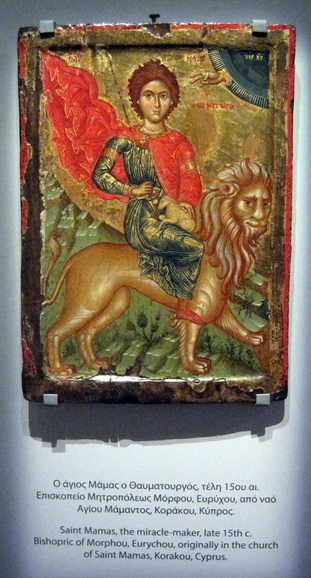
The Hellenic Institute of Holography was given the opportunity to depict this unique relic with an Optoclone during the course of its works at the Athens Byzantine & Christian Museum already in Aug 2013. In fact, Andreas Sarakinos, the chief holographer of HiH, managed to record both sides of the object in a single hologram through double exposure. The Optical Clone of this "blessing" was also displayed at the entrance of the exhibition hall in Thessaloniki, encased in a special container box and illuminated with the special luminaire HoLoFoS developed by HiH, necessary for the chromatically correct and realistic replay of holograms of such type.
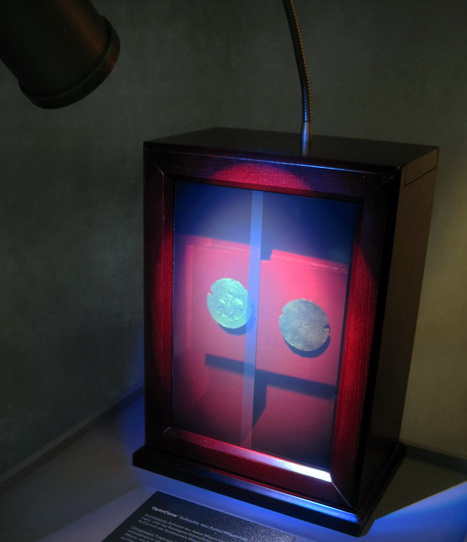
The ultra-realistic OptoClones are recorded on special panchromatic photo-sensitive high-resolution glass plates of fine grain, in a way resembling the early days of conventional photography. During holographic recording, HiH transports and installs its proprietary equipment at the Museum premises, where the selected artifacts are positioned on a special anti-vibration basis by the responsible conservators. The objects are exposed for few seconds in laser light of very low intensity passing through the holographic plate, on which the reflected light wavefront is recorded. The exposed plate is then developed, processed and dried. The unique analogue hologram derived in this manner, when properly lit, represents the original object in 1:1 scale and in every detail, at such a degree of fidelity that cannot be differentiated by the human brain. Naturally, photographs of these holograms (such as those shown on this page) cannot communicate either the real chromatic impression nor the analytical detail that only 'live' viewing can offer. OptoClones of this type are not useful only for the virtual exhibition of works of art but -more importantly- for the recording and documentation of their state before/after restoration, before/after temporary loans, for their safe comparative analysis and study, for educational purposes and many other practical applications.
|
|
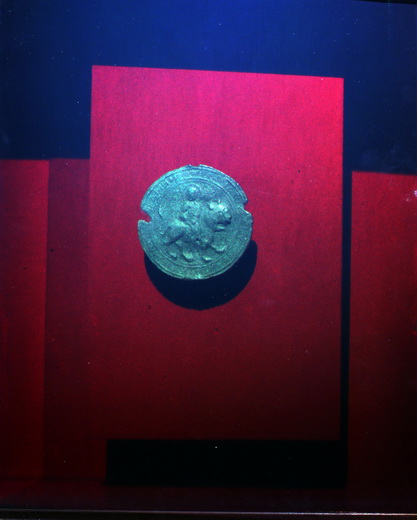 OptoClone OptoClone |
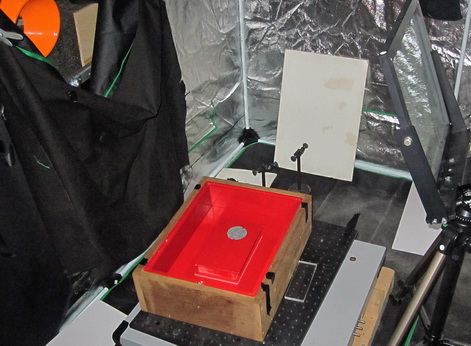 'Blessing' of St.Mamas (ΒΧΜ285) 'Blessing' of St.Mamas (ΒΧΜ285) |
The Museum of Byzantine Culture, one of the most modern in Greece, aims in presenting various aspects of life during the byzantine and post-byzantine periods: art, ideology, social structure and religion, as well as how historical changes and the political situation were affecting people' s daily life. Situated in Thessaloniki, the second most important city of the Byzantine empire, it enjoys a reputation not only for its unique permanent collection exhibits but also for the adoption of innovative presentation methods in its multi-varied temporary cultural events. It is the only museum in Greece awarded with the Council of Europe Museum Prize (2005), following the concurrent recommendation of the Council' s Committee for Culture, Science and Education.
Thus, the HiH OptoClones attracted the attention of visitors with a broader contemporary perspective in their cultural interests. In this context, the geographically widespread veneration of St.Mamas across the Mediterranean was presented to the public in a technologically advanced way with the use of a (glasses-free) 3D autostereoscopic 45'' monitor on loan from HiH and placed at the main Museum foyer. The necessary artwork and stereoscopic digital file was developed especially for the needs of the exhibition by Andreas Sarakinos on basis of the brief supplied by the Museum curators.
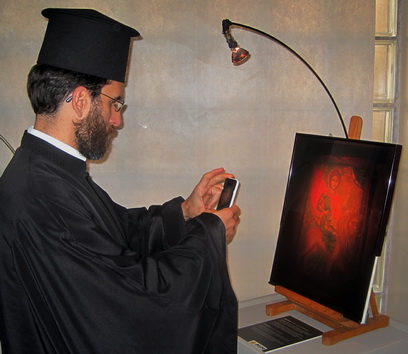 |
 Nikos Bonovas (MBC) Nikos Bonovas (MBC) |
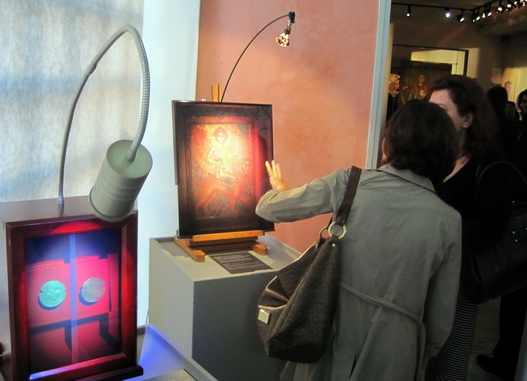 |
With the opportunity of the in-situ holographic recording of the icon of St. Mamas at the Thessaloniki Museum of Byzantine Culture, the Hellenic Institute of Holography experimented further with the creation of more OptoClones for the documentation of a small number of varied original objects selected from the permanent Museum collection.
The results of this cooperation will be soon presented publicly from this page in a separate announcement along with more exciting News from similar projects involving other cultural institutions. Subscribe to our Newletter so as to be among the first to learn about our multiple activities during this busy period ...
παρουσία του υπουργού Πολιτισμού και Αθλητισμού κ. Πάνου Παναγιωτόπουλου, του υπουργού Μακεδονίας Θράκης κ. Θεόδωρου Καράογλου, του πρέσβη της Κύπρου, ιεραρχών και αξιωματούχων.
| < Prev | Next > |
|---|



